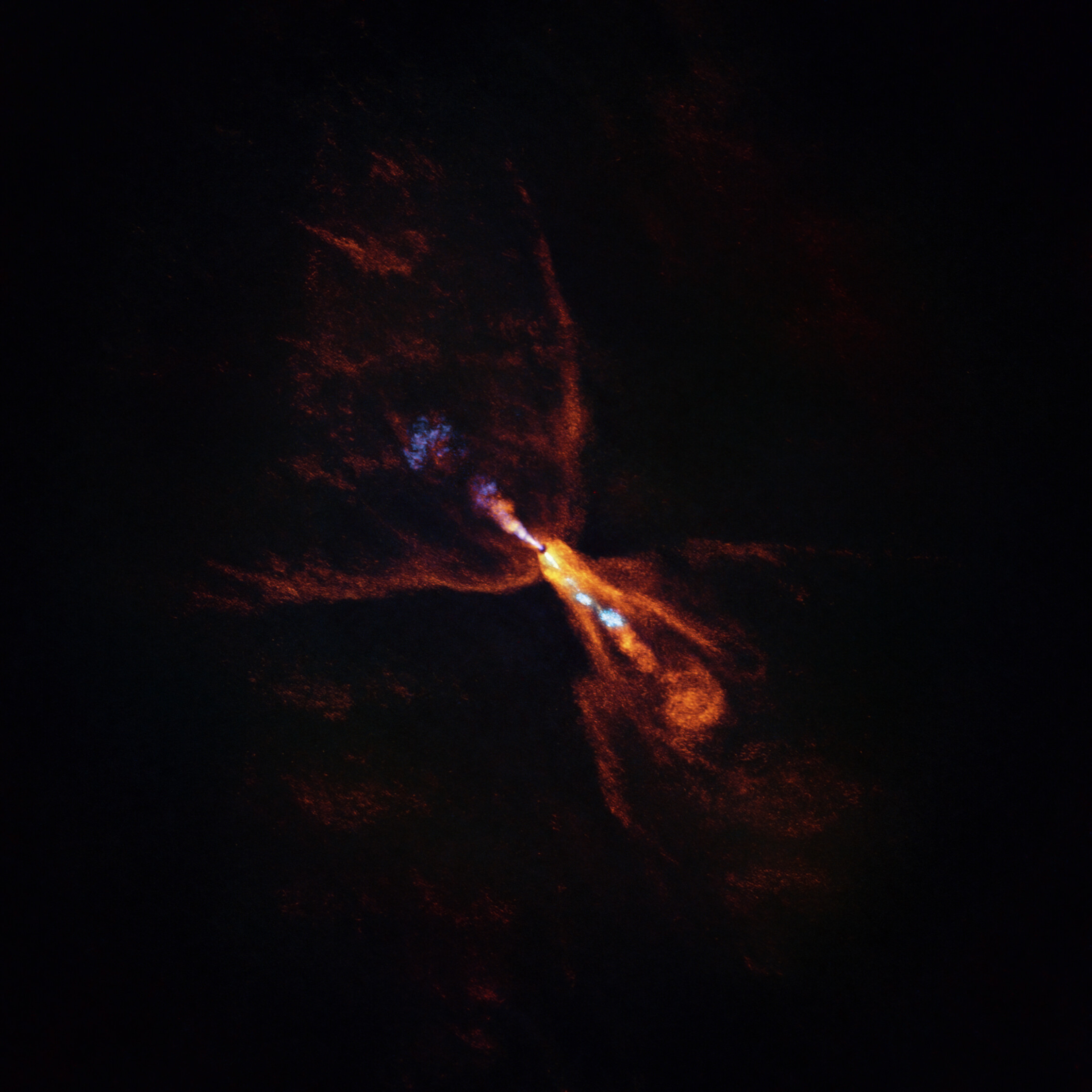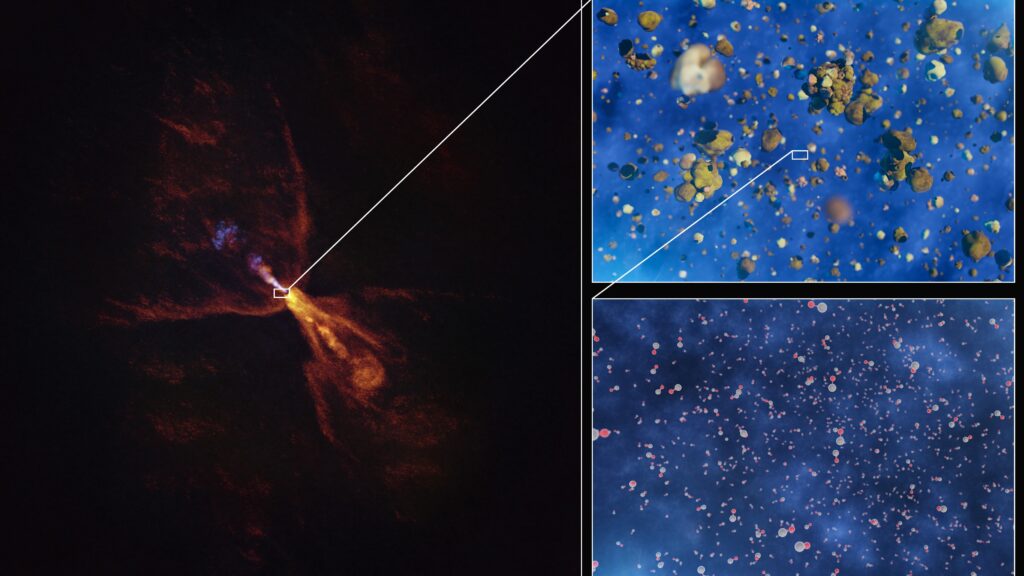For the first time ever, scientists have captured incredible images of an alien star system being born.
The image shows the very earliest moments of planet formation, when hot minerals are just beginning to solidify around a distant star, according to a statement. The researchers published their findings July 16 in the journal Nature.
Two telescopes worked together to reveal outflows of hot minerals around HOPS-315, which is a baby star like our sun roughly 1,300 light-years from Earth.
Initially, NASA’s James Webb Space Telescope (JWST) spotted “stuff coming from close to the star, but it wasn’t in the planet-forming region,” study co-author Edwin Bergin, a star formation specialist at the University of Michigan, told Live Science.
His team then used the Atacama Large Millimeter/submillimeter Array (ALMA), which is a set of antennas in the Chilean desert, to trace the outflow back to the protoplanetary disk — the dense disk of matter around a young star, where clumps of gas and dust can collapse into larger objects like planets.
“Then that unlocked everything,” Bergin said. It’s the first time that planet-forming solids have ever been detected, he said – which could help researchers better understand how our own solar system was born.
Related: Scientists discover rare planet at the edge of the Milky Way using space-time phenomenon predicted by Einstein
Our solar system came into existence roughly 4.5 billion years ago in a cloud of gas and dust. As our sun formed and evolved, other materials gradually condensed into small solids, which grew by colliding and accreting into asteroids and comets, then in some cases, planetesimals and planets.

The very earliest phases of this process are tough to spot in other systems, Bergin said, and the phase lasts just 100,000 to 200,000 years, he noted. But learning more about what happens in this moment is crucial, because when minerals begin to condense, organics also form.
The new image shows carbon monoxide – represented in orange – blowing away from the star in a butterfly-shaped outflow, with a blue jet of silicon monoxide shining like an alien spine. A disk of gaseous silicon monoxide surrounding the area was also revealed, just as the gas was solidifying into silicates.
Earth and similar rocky planets like it formed as silicates and carbon came together, Bergin explained. Other research using ancient meteorites – formed in this same era – show these space rocks are full of crystalline minerals, containing silicon monoxide.
These solids are always moving about in the hot and windy conditions of a young star system, creating a rich environment for rocks to bind to each other. “The story of planetary formation is the story of motion and movement,” Bergin noted.
The researchers are hoping to use ALMA again to probe other young star systems that may have similar outflows, he added.
